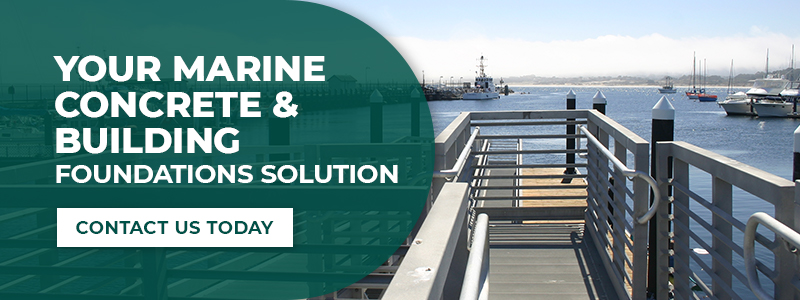The Importance of Seawalls
What is a Seawall?
Seawalls are commonly confused with what are called “retaining walls,” and while they function similarly, there is one key difference between the two. While a retaining wall is meant to retain soil mass laterally so that the level of earth can be different on either side of the wall, a seawall is specifically designed to retain soil on one side and a body of water on the other.
The purpose of a seawall is not just to separate two bodies of mass (earth and sea), but to prevent water from affecting and eroding the coastline of a specific area. This simple but effective structure has been used since ancient times to preserve areas along coastlines from being washed away near populated areas. In many coastal regions, including here in Southern California, the ocean has a tendency to wreak havoc near populated residential and commercial areas. Seawalls, therefore, have become the primary solution to solve the problem of beach erosion.

The Fundamental Importance of Seawalls
The way that seawalls are designed specifically lends itself to blocking the intensity of ocean waves crashing into the shoreline, preventing unnecessary damage to occupied areas nearby. Seawalls are convenient in that they in no way inhibit human activity being conducted near the shore, whether it be residential, commercial, or recreational.
Seawalls can also create accessibility options where they otherwise not be present. While some seawalls are designed to be solely functional in blocking erosion, they can also provide walkways for foot and vehicle traffic that would be impossible in their absence. This allows for seawalls to be multi-functional, both preventing coastline destruction and providing opportunities for fishing, recreation, and commercial activities.
Seawalls are also incredibly versatile in how they can be designed, accommodating the needs of specific areas. Anyone who lives or works near a coast knows that different areas of the shoreline have waves that tend to behave in different ways, and seawalls can be engineered and designed with these discrepancies in mind, drastically reducing the chances of property loss or damage, and increasing land value.
While some seawalls are designed perfectly straight, they can also be engineered to be curved in their structure. A curved seawall can be designed to deflect the intensity of incoming waves more effectively. An experienced marine construction and design company like Associated Pacific can accurately determine what sort of seawall is most effective for a particular stretch of coastline.
Materials Used in the Construction of Seawalls
The materials used in the construction of seawalls can vary from location to location based on the available resources and the function of the structure. Most commonly, however, seawalls are constructed from concrete and a framework of metal rods that are anchored deep into the soil.
In some instances, stones and small boulders can be utilized to act as a sort of buffer zone between the seawall and the coastline proper. This can help alleviate the intensity of incoming waves, decelerating them before impacting the seawall. A properly constructed and maintained seawall can effectively protect a stretch of coastline for decades, protecting the surrounding area, boosting its value, and preserving the desired land areas.
Why Associated Pacific Construction is Your Comprehensive Solution
A seawall is such an effective and utilitarian solution to otherwise ever-changing coastal landscapes. When designed and executed properly, a seawall is, for all intents and purposes, a permanent and reliable barrier of protection for residential, commercial, and recreational coastal communities. Associated Pacific Constructors is unique in Southern California, in that we can handle the entirety of your seawall project in-house. Our team includes experienced designers and engineers who assess the project area, an unbeatable record for acquiring the necessary local, state, and federal permits required, and a team that can handle the construction from start to finish. To get a free assessment for your seawall project, contact the seasoned pros here at Associated Pacific Constructors today!

